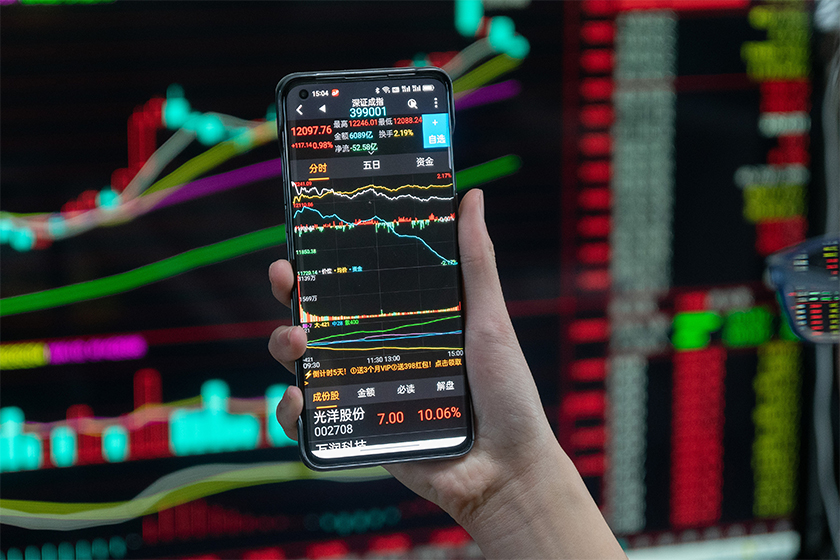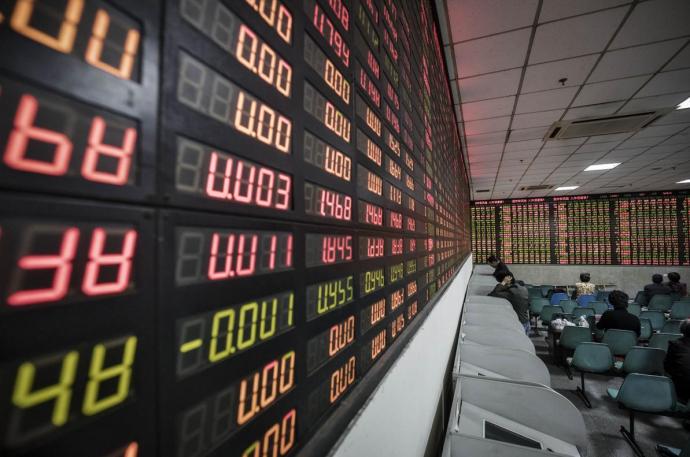Introduction
Emerging markets (EMs) have long been a hotbed of potential for investors seeking growth opportunities that are not available in developed economies. Over the past few decades, these markets have experienced rapid economic growth, particularly in countries across Asia, Africa, and Latin America, thanks to urbanization, technological advancements, and the integration of global supply chains. With the growing interconnectedness of the global economy, foreign capital inflows have played a crucial role in boosting the growth potential of these markets.
However, the question remains: Can foreign capital inflows continue to drive the upside potential of emerging market securities? While some emerging markets are seeing significant growth in foreign investment, several factors—such as global interest rate changes, geopolitical risks, and macroeconomic policies—could influence how much further these markets can grow and how sustainable this growth may be.
In this article, we will explore how foreign capital flows into emerging markets impact the performance of securities in these regions and whether these inflows have the potential to further propel the growth of EM securities.
1. Understanding Foreign Capital Inflows
What Are Foreign Capital Inflows?
Foreign capital inflows refer to the investment that comes from international investors into a country’s economy. These inflows can take several forms, including:
- Foreign Direct Investment (FDI): Investment directly into a country’s infrastructure, manufacturing, or services sectors, typically through the establishment of businesses or the acquisition of existing firms.
- Foreign Portfolio Investment (FPI): Investments into financial assets such as stocks, bonds, and other securities in the target country. FPI tends to be more liquid and can move in and out of markets more easily compared to FDI.
- Bank Loans and Other Financing: Loans extended by foreign banks or financial institutions, which can provide short-term liquidity to markets.
Foreign capital inflows play a key role in providing emerging markets with the capital they need to fund growth, infrastructure projects, and financial markets development. When investors see growth potential in a particular emerging market, they are likely to invest, either directly in businesses or through securities, creating a cycle of increased liquidity and market expansion.
Why Are Foreign Capital Inflows Important?
Foreign capital inflows can provide several benefits to emerging markets:
- Increased Liquidity: The influx of foreign investment helps increase market liquidity, making it easier for investors to buy and sell securities. This often leads to reduced volatility in the market and more efficient pricing of assets.
- Economic Growth: Foreign investment can stimulate economic growth by providing funding for new projects, infrastructure development, and business expansion. It can also create jobs and improve technology transfer and innovation within the market.
- Strengthening of Local Currencies: As foreign investors buy local securities or assets, they typically need to purchase the local currency, which can lead to currency appreciation. A stronger currency can help reduce inflationary pressures and improve the economic stability of the country.
- Access to Capital Markets: Foreign inflows can lead to the development and deepening of local capital markets, making them more attractive to both domestic and international investors.
2. Foreign Capital Inflows and Emerging Market Securities
Emerging markets, particularly those in Asia, Latin America, and Eastern Europe, are often seen as high-risk, high-reward investment opportunities. This perception makes them attractive to foreign investors who are seeking higher returns than those typically available in more mature markets. Here’s how foreign capital inflows typically impact emerging market securities:
a. Increased Demand for Securities
When foreign capital enters an emerging market, it leads to increased demand for securities—such as stocks and bonds—issued by companies or governments in that country. This surge in demand can have a direct positive impact on the performance of those securities, driving their prices higher.
For instance, if a foreign investor purchases equity in a high-growth sector within an emerging market, the demand for that stock pushes its price up. This, in turn, leads to higher valuations and increased investor confidence, which can further boost the performance of the market as a whole.
b. Improvement in Market Sentiment and Risk Appetite
Foreign inflows can also improve market sentiment and investor risk appetite. When large institutional investors or hedge funds enter an emerging market, their presence signals confidence in the market’s potential. This confidence can encourage other investors to follow suit, creating a positive feedback loop that drives further capital inflows and supports the growth potential of emerging market securities.
Investors may also gain confidence in the broader economic fundamentals of the emerging market, which can lead to greater investments in both the public and private sectors, further boosting stock prices, real estate prices, and bond yields.
c. Impact on Bond Yields
Foreign investors often purchase government bonds issued by emerging market governments. The increased demand for these bonds drives up their prices, which, conversely, lowers the bond yields. Lower yields make it cheaper for governments to borrow money, which can stimulate economic development, infrastructure projects, and fiscal stability.
For instance, emerging market debt is often viewed as an attractive investment opportunity for foreign investors due to the higher yields it offers compared to developed markets. As foreign capital flows into these markets, bond prices rise, reducing yields, and making debt instruments less expensive for issuers.
d. Sector-Specific Growth and Innovation
Certain sectors in emerging markets may particularly benefit from foreign capital inflows. For example, industries such as technology, consumer goods, and infrastructure may receive an infusion of foreign investment that accelerates development and innovation. This could lead to the growth of companies in these sectors, raising their stock prices and boosting the performance of market indices.
Emerging markets often have untapped potential in sectors such as renewable energy, fintech, and e-commerce. Foreign capital can provide the necessary resources for innovation and growth in these areas, benefiting not just individual companies, but the overall market as well.
3. Challenges and Risks of Foreign Capital Inflows
While foreign capital inflows offer many benefits to emerging market securities, they are not without risks and challenges. A few key concerns include:
a. Overdependence on External Capital
Emerging markets that rely too heavily on foreign investment may find themselves vulnerable to capital flight. If there is a global downturn, geopolitical instability, or a change in investor sentiment, foreign investors may withdraw their capital quickly, leading to significant declines in asset prices and overall market stability. This volatility can create economic instability in countries that are overly dependent on foreign inflows.
b. Currency Risk and Inflationary Pressures
Large inflows of foreign capital can lead to currency appreciation, which may initially seem beneficial. However, this appreciation can hurt exporters by making their goods more expensive in foreign markets, leading to a slowdown in economic growth. Additionally, as currency values fluctuate, foreign investors may also face the risk of currency depreciation when they repatriate their profits, which could diminish their returns.
Inflation can also become a concern when foreign capital inflows outstrip the country’s domestic ability to produce goods and services. This mismatch can lead to inflationary pressures, making it more difficult for the central bank to maintain stability.
c. Geopolitical and Regulatory Risks
Emerging markets often face higher levels of political instability, geopolitical risks, and regulatory uncertainties. These factors can make the market less predictable for foreign investors. Governments may introduce capital controls or change regulations in ways that affect the ability of foreign investors to repatriate profits, which can lead to sudden market fluctuations.
For example, changes in policies related to foreign ownership, taxation, or trade regulations could alter the attractiveness of a given emerging market, leading to shifts in capital flows and affecting the performance of securities in that market.

4. The Future Outlook: Can Foreign Capital Inflows Drive Further Growth in Emerging Market Securities?
Despite the challenges, the outlook for emerging market securities remains positive. In particular, several factors support the potential for sustained foreign capital inflows:
a. Diversification and Growth Opportunities
Emerging markets continue to offer attractive growth opportunities that are not available in developed economies. Many emerging markets are still in the early stages of urbanization, industrialization, and technological advancement, making them particularly appealing for long-term investors seeking diversification and higher returns.
b. Rising Consumer Demand
With the rise of the middle class in emerging economies, there is a growing demand for consumer goods, services, and technology. This trend is expected to continue, which can further drive the growth potential of emerging market stocks and bonds, attracting foreign investors seeking exposure to fast-growing sectors.
c. Increasing Integration into the Global Economy
As emerging markets become more integrated into the global economy, they become increasingly attractive to foreign investors. The development of financial markets, the opening of trade barriers, and the improvement in infrastructure can make these markets more appealing to international investors.
5. Conclusion: Foreign Capital Inflows and Emerging Market Securities
Foreign capital inflows have the potential to continue driving the upside of emerging market securities, as they bring liquidity, investor confidence, and funding for economic development. However, these inflows also bring risks, including volatility, currency fluctuations, and political instability. Investors must be cautious about the potential downside while weighing the long-term growth opportunities that emerging markets present.
Ultimately, whether foreign capital inflows can further boost emerging market securities depends on global economic conditions, domestic policies, and the evolving appetite of foreign investors. For those looking to invest in emerging markets, a diversified portfolio, an understanding of local risks, and a focus on long-term growth potential will be key to navigating the complexities of these markets.

















































